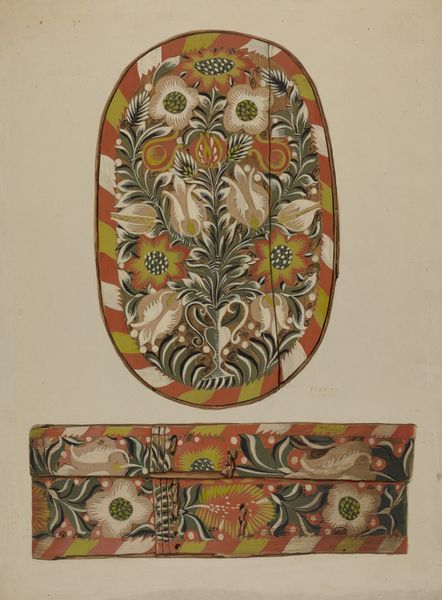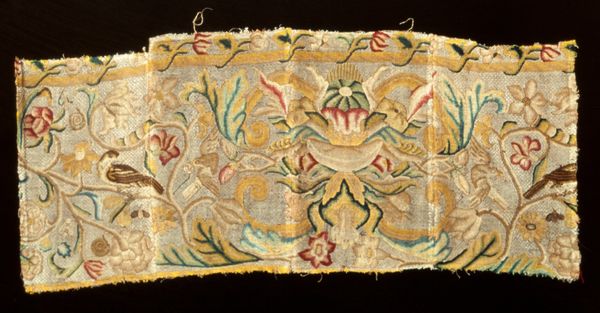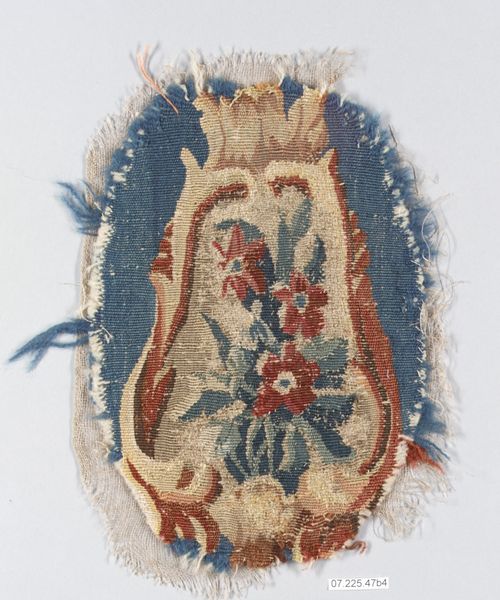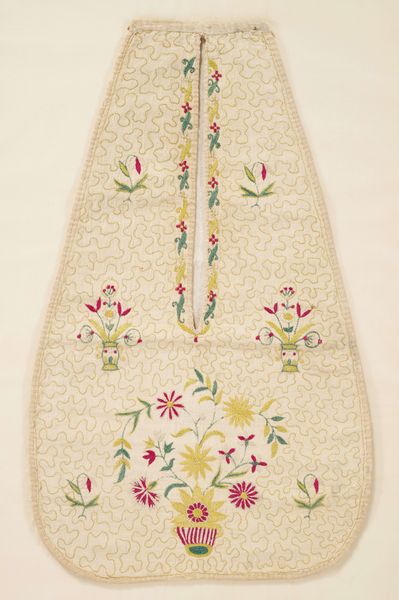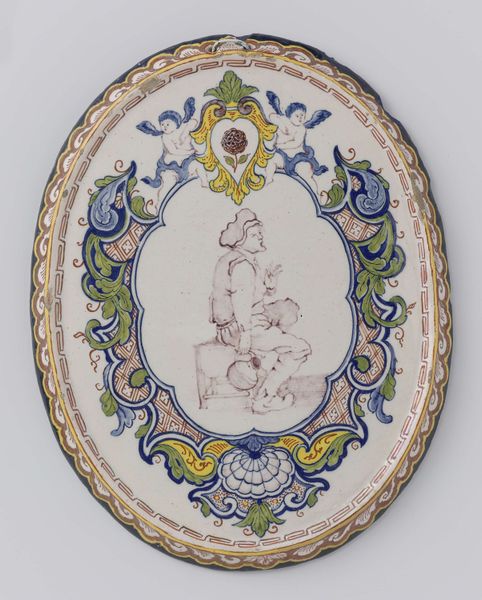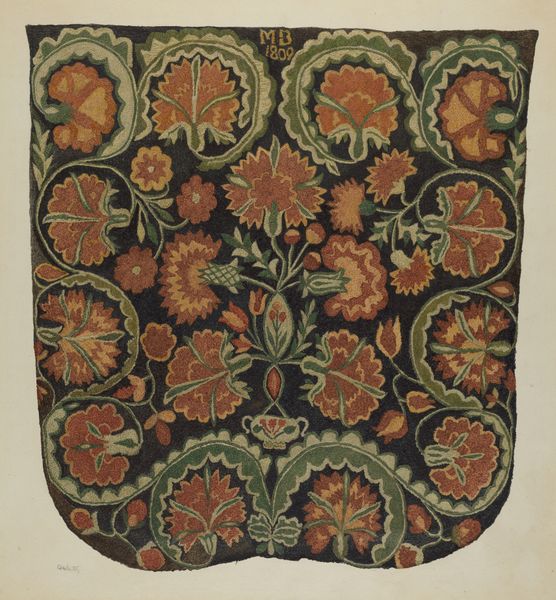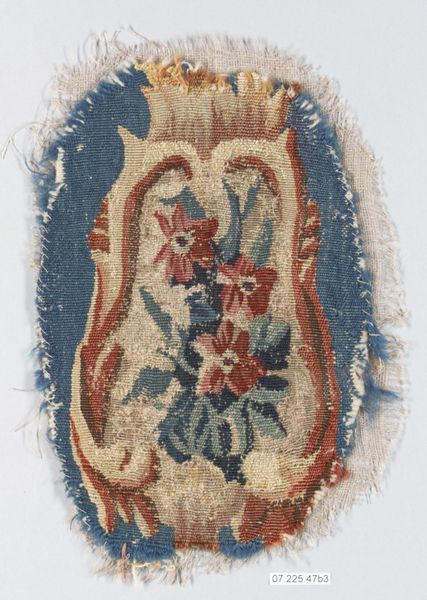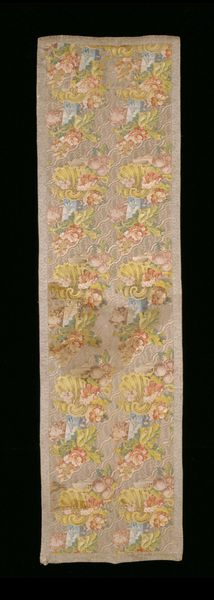
weaving, textile
#
weaving
#
textile
#
decorative-art
#
rococo
Dimensions: Back: 29 × 24 in [approx.]. (73.7 × 61 cm) Seat: 34 × 35 in.[approx.] (86.4 × 88.9 cm) Armrests: 12 × 8 in. [approx.] (30.5 × 20.3 cm)
Copyright: Public Domain
Editor: This is a set of four textile panels, likely woven for the upholstery of an armchair. They were created sometime between 1754 and 1756 by the Beauvais workshop. I'm really drawn to the soft colors and how the floral pattern feels both contained and wild. How would you interpret these panels? Curator: The floral motifs aren't simply decorative. The rose, for example, in Western art has long signified love, beauty, and even secrecy. Note its placement—central, prominent. These symbols evoked an idealized pastoral world for the armchair's owner. The placement of the roses hints towards emotional balance. Do you notice how the red accents create a sense of drama and formality despite the otherwise gentle color palette? Editor: Yes, now that you point it out, that subtle contrast really stands out. It seems like the roses act as both the visual and symbolic anchor of the composition. Curator: Precisely. The Rococo period often used such pastoral imagery to soften the harsh realities of aristocratic life. The symbolism provided comfort and a retreat into nature, a sort of visual escapism that, whether consciously or not, would tap into shared cultural memories of simpler times. And the fact these are for an armchair…what deeper symbolism might be gleaned? Editor: Hmm… Repose? Reflection? A throne, even? These floral motifs now have a whole new layer of meaning! Curator: Indeed! Everyday objects often carry potent symbols that we unconsciously interact with. Understanding them connects us to past societies. Editor: It’s fascinating to consider how seemingly simple floral designs can carry such a wealth of historical and psychological meaning. I will certainly pay attention to textiles more attentively!
Comments
No comments
Be the first to comment and join the conversation on the ultimate creative platform.
